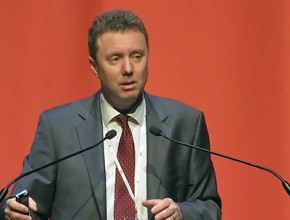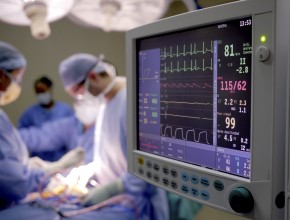Surviving Sepsis Campaign: International Guidelines for Management of Sepsis and Septic Shock: 2016
The new edition of Surviving Sepsis Campaign (SSC), published simultaneously in European and North American Journals, summarizes the current thinking about treatment of sepsis and septic shock. In the guidelines, the authors distinguish between recommendations, which should be followed (strong recommendations), and suggestions, which may be followed (weak recommendations).
Part 1: Screening for sepsis and initial resuscitation
Resuscitation protocols over the last decade emphasized the so-called Rivers protocol, which involves generous fluid resuscitation, use of vasopressors and inotropic agents, as well as liberal transfusions and measurements of central venous oxygenation. Recent studies found that rigid adherence to a specific protocol may not be required as long as clinicians conducting resuscitation recognize sepsis as a medical emergency, have training and experience, and use a liberal volume strategy during the first 3 hours (SSC authors recommend at least 30 mL of crystalloid per kg). The prerequisites for a successful resuscitation, stressed in this SSC edition, additionally include frequent clinical reassessment and, if available, echocardiography and dynamic measures of assessing whether the patient requires additional fluids (eg, passive leg raising, fluid challenges against stroke volume measurements).
The initial blood pressure target is reconfirmed as 65 mm Hg for mean blood pressure (recommendation). The role of lactate level normalization as a parameter guiding resuscitation is also reiterated (suggestion).
The authors of SSC guidelines recommend that institutions caring for acutely ill have sepsis screening programs, and that such programs undergo periodic evaluations and modifications as needed.
Part 2: Diagnosis and specific treatments
The authors of SSC guidelines recommend that in the setting of sepsis, 2 sets of blood cultures are obtained before administering antibiotics. They provide what they consider a reasonable limit of a 45-minute delay in antimicrobial treatment to accomplish culture taking.
At the same time, the authors recommend intravenous antibiotic delivery within 1 hour of recognition of sepsis or septic shock and setting up performance goals to achieve that target. However, they stressed that delivery of antibiotics within this time frame may require adjustment of the health-care system. Introducing a change to the previous SSC guidelines, the authors suggest empiric use of combination therapy with at least 2 antibiotics of different antimicrobial classes for a single pathogen for the initial management of septic shock; in the absence of shock, they suggest that combination therapy is not used. Modification of the antibiotic dose, especially the initial loading dose, to achieve a therapeutic level of antimicrobials is emphasized, for example, vancomycin 25-30 mg/kg of actual body weight (rather than the standard dose of 1 g), ciprofloxacin 600 mg per dose, and levofloxacin 750 mg per dose. The need for daily assessment of antibiotics in view of their possible narrowing or discontinuation is stressed. The antimicrobial treatment duration of 7 to 10 days is suggested, with longer periods for Staphylococcus aureus infections, in the setting of persistent neutropenia, and in patients with undrainable foci of infections. Shorter courses may be used in patients with rapid improvement following adequate source control of intraabdominal or urinary sepsis. The authors recommend against routine combination treatment (this does not preclude use of multiple antibiotics to broaden coverage or its use in the acute stages of septic shock) except for selected situations, including infections with multidrug-resistant Acinetobacter or Pseudomonas spp. They also suggest a combination of a beta-lactam and macrolide for treatment of pneumococcal septic shock.
The authors suggest that measurement of procalcitonin may support shortening the duration of antimicrobial therapy in sepsis patients and may also support the decision to discontinue antibiotics in those patients who after starting empiric sepsis therapy have only limited evidence of infection. The authors also recommend against sustained systemic antimicrobial prophylaxis in patients with severe inflammatory states of noninfectious origin and risk of secondary infection (severe pancreatitis, burns).
Part 3: Sepsis and septic shock: additional therapies, including choice of fluid
Opinions on the choice of fluid for use in sepsis and septic shock continue to evolve. The degree of uncertainty is reflected in the language employed in the SSC, which mostly provides suggestions. Recommendations include the use of crystalloid rather than colloids as an initial choice and a recommendation against using hydroxyethyl starches. Suggestions include allowing the use of either balanced crystalloids (eg, Ringer solution) or saline (while emphasizing the need to avoid hyperchloremia), using albumin in patients who received “substantial amounts of crystalloids,” and preference for crystalloids over gelatins.
In the part dealing with vasoactive medications, SSC authors confirmed and strengthened the case for norepinephrine as a first-choice vasopressor. Epinephrine or vasopressin is suggested as an add-on therapy. Dopamine remains a distant choice limited to patients with low risk of tachyarrhythmias and absolute or relative bradycardia. Authors reiterate the recommendation against the use of low-dose dopamine for renal protection.
Considering additional therapies, the guidelines continue to soften the support for glucocorticosteroid use, suggesting hydrocortisone only in patients remaining unstable despite support with fluids and reasonable doses of vasopressors.
Red blood cell transfusion is recommended with hemoglobin levels <70 g/L (rather than higher thresholds) unless there is myocardial ischemia, severe hypoxemia, or acute hemorrhage. Platelet transfusion is suggested with counts <10,000/mm3, or <20,000/mm3 in patients with high risk of bleeding (including many patients with sepsis). The guidelines again suggest not to use intravenous immunoglobulins.
In the area of mechanical ventilation, the authors remind us about the advantage of 6 mL/kg of tidal volume ventilation versus 12 mL/kg and advantage of higher versus lower positive end-expiratory pressure. They suggest recruitment maneuvers in patients with acute respiratory distress syndrome (ARDS). There is a new recommendation (rather than a limited suggestion) to use prone ventilation in individuals with ARDS and a PaO2/FiO2 ratio <150.
 English
English
 Español
Español
 українська
українська




